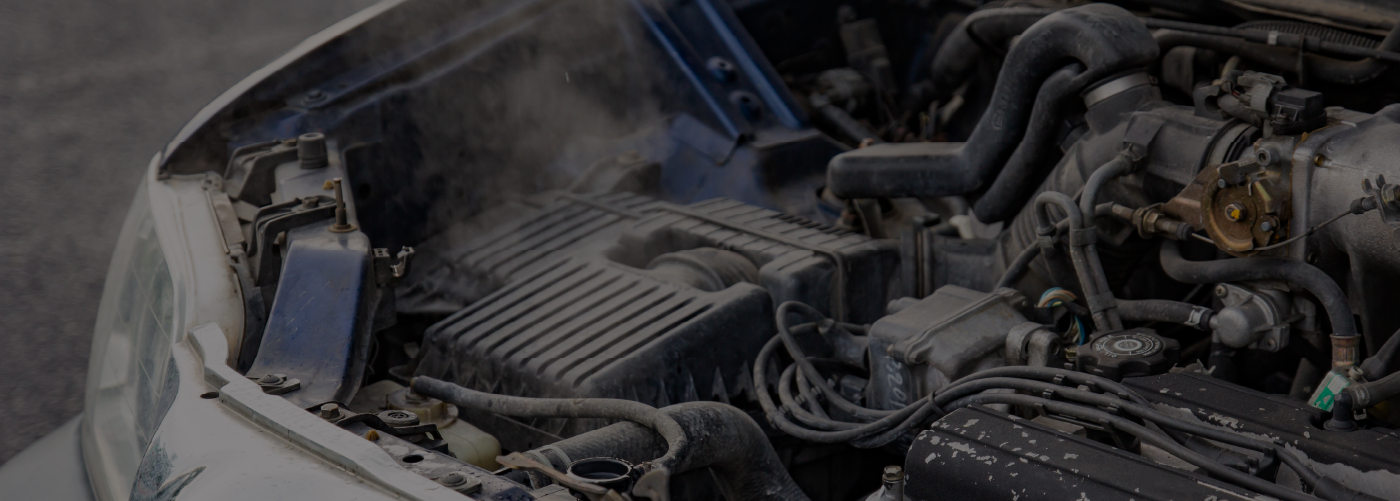When it comes to engine problems, most drivers think of things like worn-out spark plugs, low oil, or maybe a failing alternator. But one of the most catastrophic (and often misunderstood) engine failures is hydrolocking. Unlike other mechanical issues that creep up slowly, hydrolocking can happen instantly, and when it does, the damage is usually severe and expensive.
At Burt Brothers, we’ve seen firsthand the devastation a hydrolocked engine can cause. One moment, your vehicle is running fine, and the next, it’s completely shut down with thousands of dollars in damage. The good news? Hydrolocking is preventable if you know what causes it and how to avoid it.
What Is a Hydrolocked Engine?
Hydrolocking (short for hydraulic lock) occurs when water or another liquid enters your engine’s combustion chamber. Your engine is designed to compress a mixture of air and fuel—but liquids can’t be compressed the same way air can.
When water fills the cylinder, the piston tries to compress it during the engine cycle. Because the liquid won’t compress, the force has nowhere to go. That’s when damage happens—often violently.
Common causes of hydrolocking include:
- Driving through flooded streets where water splashes into the intake.
- Crossing deep puddles or streams off-road.
- Heavy rainstorms where improper seals or missing splash guards allow water intrusion.
Essentially, if your intake system ingests water instead of air, you’re at risk.
What Happens When an Engine Hydrolocks?
The moment an engine hydrolocks, you’ll likely know it. The symptoms appear instantly, and they’re hard to ignore.
- Immediate stalling: The engine suddenly dies and won’t restart.
- Unusual noises: If water got inside before the stall, you might hear loud knocking or banging.
- No restart: Turning the key may only produce a crank with no ignition.
Internally, the damage can be devastating:
- Bent connecting rods from the piston slamming into incompressible water.
- Cracked pistons or cylinder heads from the sudden pressure.
- Scored cylinder walls that ruin compression.
Even a small amount of water can cause catastrophic engine failure if you attempt to start the vehicle again. Forcing the engine to turn over only compounds the damage.
Signs Your Engine Might Be Hydrolocked
If you’ve recently driven through standing water and notice something unusual, it’s important to know the red flags of hydrolocking.
Look out for:
- A sudden engine shutdown after splashing through water.
- Clunking or knocking noises during cranking.
- The engine turns over but never starts.
- Water visible in the intake or air filter box.
- A check engine light or error codes pointing to misfires.
At Burt Brothers, we always remind drivers: Don’t keep trying to start the car if you suspect water intrusion. The sooner you stop, the better chance you have of minimizing damage.
How to Avoid Hydrolocking Your Engine
Hydrolocking may sound scary, but the good news is, it’s preventable. Here’s how to keep your engine safe:
- Avoid deep water: If you see a flooded road, turn around. No shortcut is worth destroying your engine.
- Know your vehicle’s limits: Check your owner’s manual for water fording depth or ground clearance before off-roading.
- Maintain seals and splash guards: These protective barriers keep water out of sensitive areas.
- Slow down in heavy rain: High-speed splashes can send water right into the intake.
- Consider a snorkel intake (for off-roaders): Raised intakes provide added protection for trucks and SUVs tackling streams and trails.
The best advice? When in doubt, don’t risk it. If water looks too deep, it probably is.
What to Do If You Suspect Hydrolocking
If you’ve already driven through water and think your engine is hydrolocked, follow these steps:
- Stop trying to start the engine immediately.
- Disconnect the battery to prevent further attempts.
- Inspect the air intake and filter for signs of water.
- Remove spark plugs to see if water is inside the cylinders.
- Tow the vehicle to a trusted mechanic—don’t try to drive it.
At Burt Brothers, our ASE-certified technicians can diagnose the extent of the damage and walk you through your repair options. If insurance applies, we can also help document the incident for your claim.
Can a Hydrolocked Engine Be Repaired?
The answer depends on how much water entered the engine and how quickly the situation was handled.
- Minor cases: If caught early, sometimes just drying out the cylinders, changing fluids, and replacing spark plugs may be enough.
- Moderate damage: Bent rods or piston damage may require major repairs, including part replacement or even a full engine rebuild.
- Severe cases: In worst-case scenarios, a complete engine replacement is necessary.
The costs can range from hundreds to thousands of dollars. This is why prevention is far more affordable than repair.
Preventive Maintenance Tips to Reduce Risk
Aside from avoiding deep water, regular maintenance helps keep your vehicle prepared for unexpected conditions.
- Inspect your air intake regularly to ensure no cracks or loose connections.
- Keep splash guards in place to protect underbody components.
- Stay on top of service intervals—a well-maintained engine is more resilient overall.
- Educate all drivers in your household about the dangers of flood driving.
At Burt Brothers, we include intake and seal checks as part of our comprehensive inspections. Our goal is to give you peace of mind that your vehicle is ready for whatever the road (or weather) throws at it.
Conclusion: Protect Your Engine from Water Damage
A hydrolocked engine isn’t just inconvenient, it’s one of the most costly and destructive issues your vehicle can face. Knowing what hydrolocking is, how it happens, and the signs to look out for can save you thousands of dollars in repairs.
The bottom line: prevention is everything. Avoid floodwaters, maintain your vehicle, and trust professionals like Burt Brothers to keep your car safe and reliable.
If you suspect water intrusion or just want extra peace of mind, schedule an inspection at your nearest Burt Brothers Tire & Service location. Because when it comes to protecting your engine, it’s always better to be safe than sorry.





